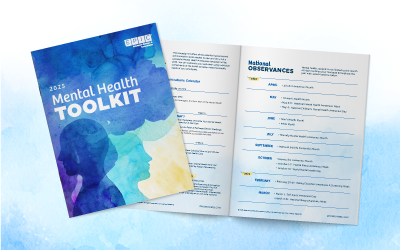SPECIAL COMPLIANCE ALERT
Court Rules OSHA Vaccination Mandate Emergency Temporary Standard Can Move Forward
Updated from the original release on December 21, 2021
Quick Facts
- On November 4, 2021, the Occupational Safety and Health Administration (OSHA) released its highly anticipated emergency temporary standard (ETS) requiring businesses with 100 or greater employees to mandate their employees to get vaccinated against COVID-19 or wear a mask and test for COVID-19 on at least a weekly basis.
- The Sixth Circuit Court of Appeals overturned an earlier court ruling, meaning that now private employers with at least 100 employees will need to implement a mandatory vaccine program.
- OSHA has delayed enforcement of the testing requirement in the rule until February 9, 2022, to give employers time to implement policies to comply with the ETS.
- OSHA has set up a website containing detailed information regarding the ETS and additional information, resources and guidance as it is released.
- On December 22, 2021, SCOTUS announced it would hear oral arguments on the challenges to the Biden administration’s vaccine mandate.
Background
On November 4, 2021, OSHA released an ETS requiring businesses with at least 100 employees to mandate that their employees be fully vaccinated against COVID-19 or wear a mask and test for the virus on at least a weekly basis. Under the ETS, employers are also allowed to implement a strict vaccine mandate without providing the “mask and testing” option to employees.
Shortly after the release of the ETS, a three-judge panel of the U.S. Court of Appeals for the Fifth Circuit (Fifth Circuit) issued a stay, effectively prohibiting OSHA from moving forward with the mandate. In response to the Fifth Circuit’s action, OSHA suspended enforcement of the ETS pending the outcome of further litigation.
The Sixth Circuit U.S. Court of Appeals (Sixth Circuit) has overturned an earlier court ruling that had blocked the OSHA vaccine mandate ETS. The new ruling means that private employers with at least 100 employees will need to implement a mandatory vaccination program unless the U.S. Supreme Court intervenes. In response to the ruling, OSHA has delayed enforcement of the testing requirement in the rule until February 9, 2022, to give employers time to implement the policies to comply with the ETS.
Situation Moving Forward
In response to the latest court ruling lifting the stay, OSHA issued the following statement announcing that they would delay enforcement of the rule to give employers time to implement the necessary policies:
“To account for any uncertainty created by the stay, OSHA is exercising enforcement discretion with respect to the compliance dates of the ETS. To provide employers with sufficient time to come into compliance, OSHA will not issue citations for noncompliance with any requirements of the ETS before January 10 and will not issue citations for noncompliance with the standard’s testing requirements before February 9, so long as an employer is exercising reasonable, good faith efforts to come into compliance with the standard. OSHA will work closely with the regulated community to provide compliance assistance.”
Additional details on deadlines and enforcement are expected from OSHA soon.
On December 22, 2021, SCOTUS announced it would hear oral arguments on the challenges to the Biden administration’s vaccine mandate. SCOTUS made the announcement after the cases came to the court in December on an emergency basis. Oral arguments are scheduled for January 7, 2022.
OSHA ETS Information and Resources
OSHA has set up a website containing detailed information regarding the ETS, and additional information, resources and guidance as it is released, including:
- ETS factsheets;
- Frequently Asked Questions (FAQs) with almost 100 questions and answers regarding the ETS;
- Sample employer vaccine mandate policies; and
- Recordings of OSHA ETS webinars.
Note that the standard does not apply to public employers such as cities, counties, and public schools, or to workplaces covered under the Safer Federal Workforce Task Force COVID-19 Workplace Safety: Guidance for Federal Contractors and Subcontractors. Nor does it apply in settings where employees provide healthcare services or healthcare support services subject to the requirements of the Healthcare ETS issued previously. The standard also does not apply to employees who work remotely or employees who work exclusively outdoors.
Vaccine and Testing Mandate Implementation Steps for Employers:
1. Determine Employer Coverage
All private employers with 100 or greater employees will be subject to the federal ETS or a state standard that meets or exceeds the requirements of the federal standard. The 100-employee threshold is based upon a companywide headcount, not by the number of employees at a particular worksite.
Employers should count all employees individually, whether they are full time, part time or working on a temporary basis. Independent contractors and leased employees (where the client employer is not the employer of record) are not counted.
2. Survey Current Employees on Vaccination Status
Understanding how many unvaccinated workers an employer has will help inform the best compliance approach for the organization. For example, an employer with only 10 unvaccinated workers might allow those employees to choose either vaccination or weekly testing, whereas a company with 100 unvaccinated workers may find the logistics of collecting weekly testing documentation too difficult and therefore decide not to offer the testing option.
3. Research Testing
Determine whether an employer will offer the option of weekly testing to unvaccinated workers or only use testing as a religious or disability accommodation. Understanding the logistics of testing should be reviewed before determining the employer’s compliance approach.
Accessibility
Questions to Consider:
- Which vaccines do the testing locations offer and what is their capacity for handling your employee testing?
- Are there testing locations near the workplace?
- What are the hours and procedures for testing at the testing locations?
- How long does it take to get testing results there?
- Is onsite testing a more convenient option?
- What day(s) of the week will the employer require testing?
- Will local testing locations be open and available to test all impacted workers?
- Which test will the employer accept?
Home testing kits are widely available at pharmacies and online, some with mail-in options for results (PCR), while others give results in about 15 minutes (rapid antigen test). The ETS allows for the use of over-the-counter (OTC) self-tests that are observed by employers or authorized telehealth providers. Self-administered and self-read rapid tests are not acceptable under the ETS.
Cost
The ETS does not require employers to pay for any costs associated with testing; however, employers should consider the following:
- Are there current state laws that would require employers to pay for employment-related costs? For example, states that require the reimbursement to employees for necessary business expenses would apply here.
- What are the projected costs for both the employee and employer for testing? Contact local suppliers to compare pricing, including organizations providing onsite testing services. The Internal Revenue Service (IRS) has stated in IR 2021-181 that in-home tests would be reimbursable under flexible benefits plans such as flexible spending accounts and health savings accounts, which may help employees manage costs.
- Will the cost of testing, if paid for by the employee, bring the employee’s weekly pay below minimum wage? Both the Fair Labor Standards Act (FLSA) and some state laws would not allow this.
- Will an employer’s budget allow for employer-paid testing for as long as the ETS is in place (which would be six months to start, then it could be extended for another six months or made a permanent standard)? Or would mandatory vaccination, which is likely less costly, be the better option?
4. Consider Paid-Time Off Requirements
The ETS requires employers to provide employees with up to four hours of paid time off to receive the vaccine during normal work hours. This includes time spent scheduling the vaccine appointment, completing paperwork, receiving the vaccine and traveling to and from the vaccination site during regular work hours. Employers are not required to offer paid time off to employees who choose to receive the vaccine outside of their regular work hours.
Employers must also provide a reasonable amount of paid sick leave to recover from side effects experienced following vaccination; however, employers may require employees to use paid sick leave benefits already provided by the employer.
For employers that include a testing option for unvaccinated workers, the time spent obtaining a COVID-19 test may be considered “hours worked” depending on the circumstances, such as directing employees to use a specific provider at specific times. Employers may also be able to require the use of paid time off (PTO) for workers who are unable to get tested outside of work hours. This would not be a popular option from a worker’s perspective but could potentially induce them to choose vaccination over weekly testing.
5. Address Remote Worker Requirements
If an employer has remote workers who will never come into the office, employers may also be able to use remote work as an option for unvaccinated workers.
An employer may choose to consider a full-time remote-work option, determine how many employees this would apply to, what the employee-eligibility requirements would be, what the associated costs with long-term telecommuting might be and any other data meaningful to the company.
6. Determine a Compliance Approach and Create a Written Policy
Under the ETS, an employer must establish, implement and enforce a written mandatory vaccination policy that requires the following:
- All new and existing employees to be fully-vaccinated except for employees with medical contraindications, for whom medical necessity requires a delay in vaccination, or who are legally entitled to a reasonable accommodation such as a disability or sincerely held religious belief.
- OR an employer must establish, implement and enforce a written vaccination policy permitting each employee to choose between vaccination or providing proof of regular testing and wearing a face covering.
A clearly written policy should detail the requirements the employer has decided upon and the consequences for noncompliance.
7. Develop Employee Communications
Start developing employee communications now. Consider sending a memo to employees that explains the requirements of the ETS and how the ETS impacts current company policies and procedures.
Communicate ahead of time where employees can go to get vaccines near the workplace, or how to find a location near their homes, and keep this information easily accessible. Detail whether employees must seek testing outside of work hours.
Thank you to Guardian HR, for making this important update available for you. Guardian HR provides premium HR support services to employers that can help them navigate through this challenging vaccine mandate. For more information go to www.benefitcomply.com/hr-support.
EPIC Employee Benefits Compliance Services
For further information on this or any other topics, please contact your EPIC consulting team.
Learn About Our Employee Benefits Compliance Services
EPIC offers this material for general information only. EPIC does not intend this material to be, nor may any person receiving this information construe or rely on this material as, tax or legal advice. The matters addressed in this document and any related discussions or correspondence should be reviewed and discussed with legal counsel prior to acting or relying on these materials.
DOWNLOADABLE RESOURCES
SPECIAL COMPLIANCE ALERT (PDF)
THE 2022 COMPLIANCE WEBINAR SERIES IS HERE!
Register for Our 2022 Employee Benefits Compliance Webinars
Sign up for our Compliance Matters Newsletter
You’ll receive our monthly newsletter, as well as special compliance alerts and invitations to our compliance webinars
Related Content
Products
Employee Benefits Consulting
Our dedicated benefits team is focused on delivering better outcomes – to both your benefits program and ...
Products
Compliance
We provide comprehensive consulting services and in-depth education regarding the ever-changing employee ...
Products
Risk Management
Our experienced teams take an enterprise-wide approach, consulting closely with you to identify, analyze and ...


